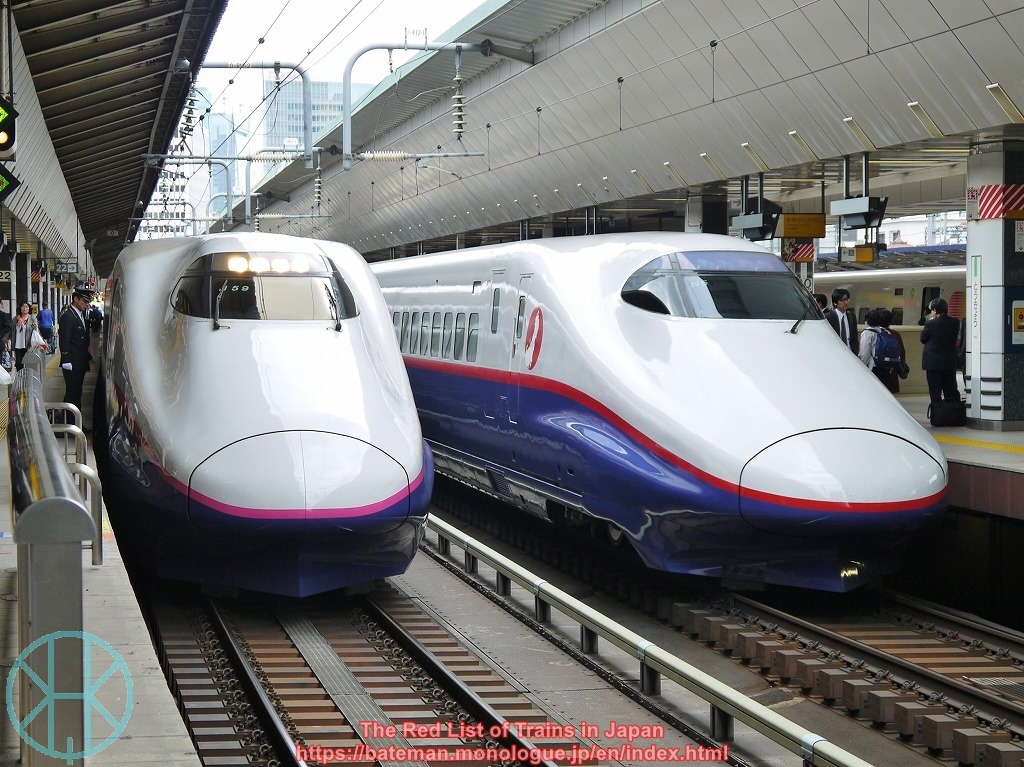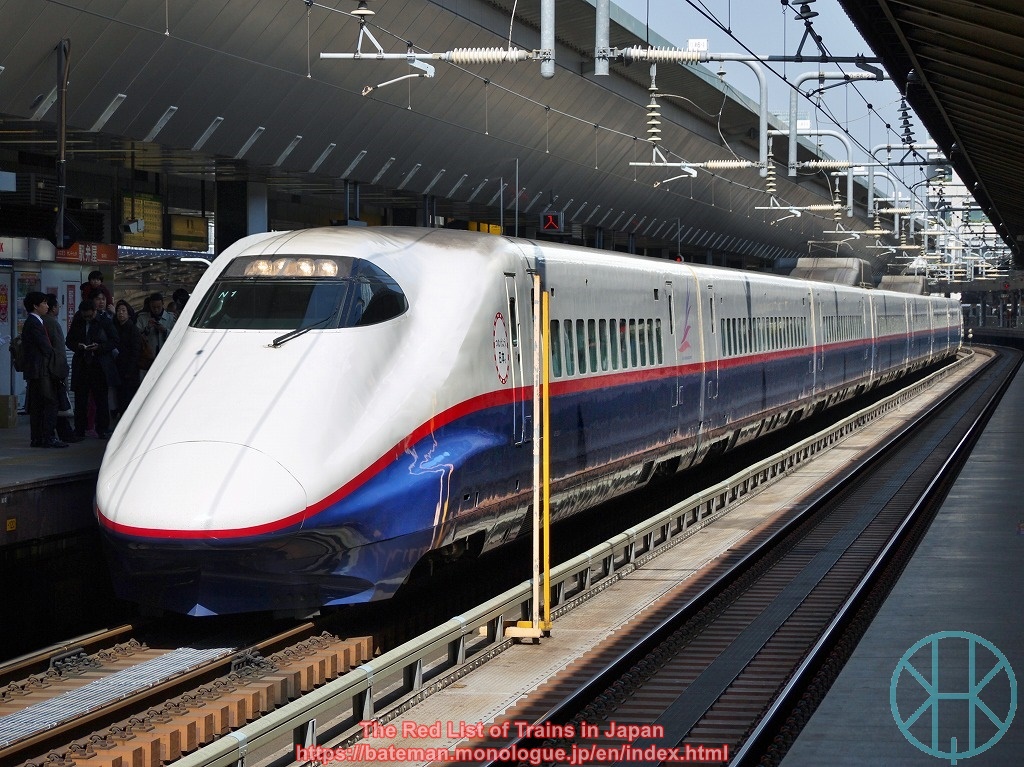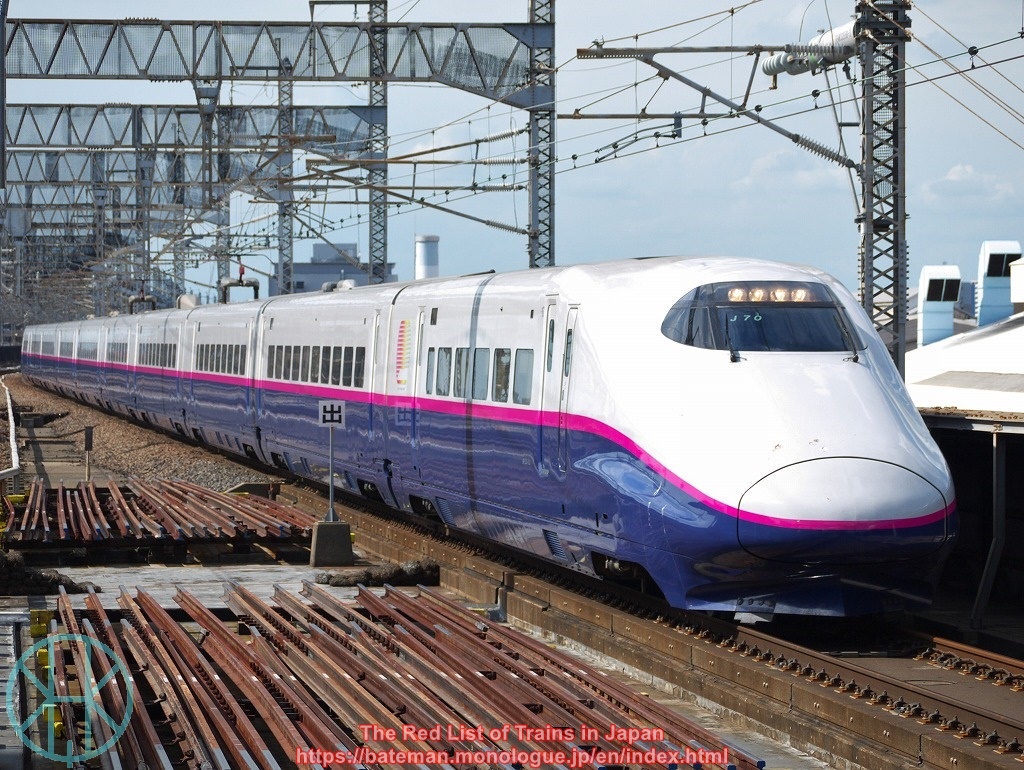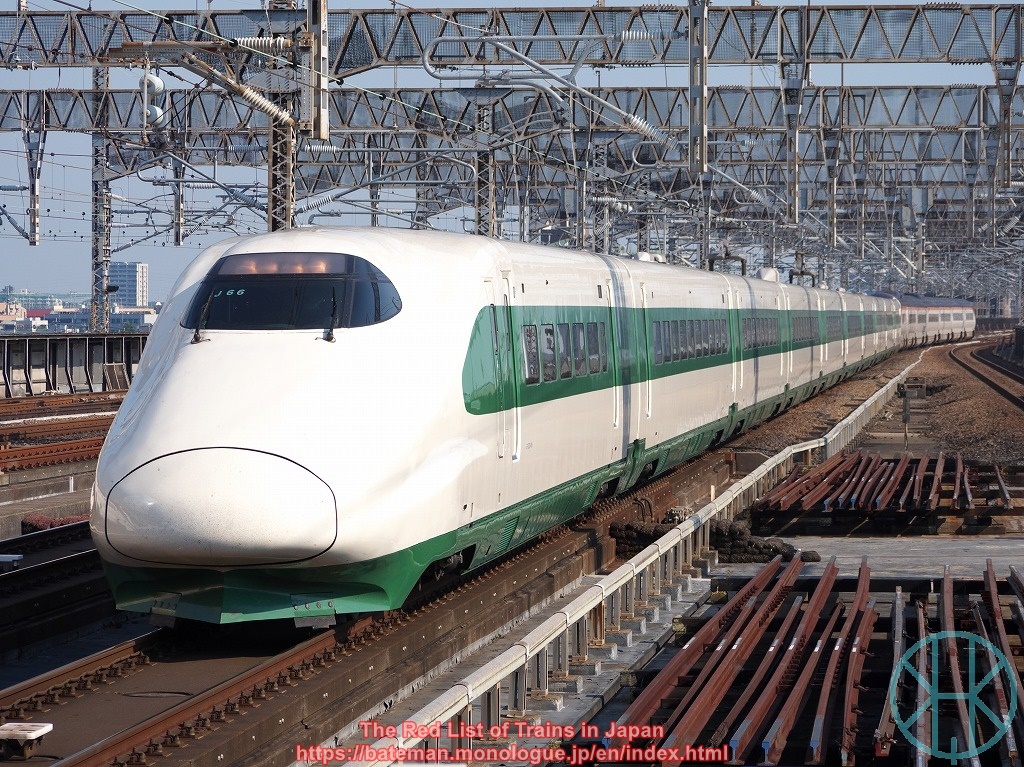E2 series Bullet Train

Data (as of 29 Nov 2025)
| Status: | Endangered |
| Constructed in: | 1995-2010 |
| Number built: | 502 |
| Registered: | 60 |
History
The E2 series was marked as the then-standard bullet train for JR East network, and developed for Yamabiko services on Tohoku Shinkansen and Asama services on Nagano Shinkansen (extended and called Hokuriku Shinkansen since 2015). Its maximum speed is 275 km/h (171 mph). JR East also intended to attract foreign journalists and tourists visiting Nagano to see the 1998 winter Olympics.
The E2 series entered service on Tohoku Shinkansen in 1997. They were used for some Yamabiko services (Tokyo - Morioka) that are coupled with Komachi services (E3 series). The E2 series also entered Asama services (Tokyo - Nagano) when Nagano Shinkansen opened in the same year. Each unit consisted of eight (Asama) or ten coaches (others). Even after the Olympics, JR East continued introducing the series to replace 200 series. Thus, the E2 series were also used for Joetsu Shinkansen services.
The E2 series declined dramatically in the mid-2010s, following the introduction of two new types of bullet trains. On Tohoku Shinkansen, they were replaced with E5 series, which can run far faster. Some of the E2 series were reallocated to Joetsu Shinkansen. On Hokuriku Shinkansen, all of them were replaced with E7 series by 2017. The E2 series survived for two years after Hokuriku Shinkansen was extended from Nagano to Kanazawa, but they never served beyond Nagano.
China Railway CRH2, a high-speed train in People's Republic of China, is based on the E2 series.
Current Operations & Future Prospects
The E2 series are currently used for a few Yamabiko (Tokyo - Morioka, semi-fast) and Nasuno (Tokyo - Koriyama, all-stations) services on Tohoku Shinkansen. JR East and trade unions once suggested that the remaining units would be withdrawn in 2025, but it is likely to be deferred for a few years.
Japan Railway Construction, Transport and Technology Agency, which conducts a speed-up programme in Seikan Tunnel, purchased a unit in 2025. They will be used as a test train there.
Photos

The prototype unit looked different from others, but it was not easy to find where and how.

Those for Tohoku Shinkansen have pink bands. They were used for Joetsu Shinkansen as well.

In 2022, a trainset was repainted white and green like 200 series in commemoration of the 40th anniversary of Tohoku and Joetsu Shinkansens.
(Updated: 29 Nov 2025)
